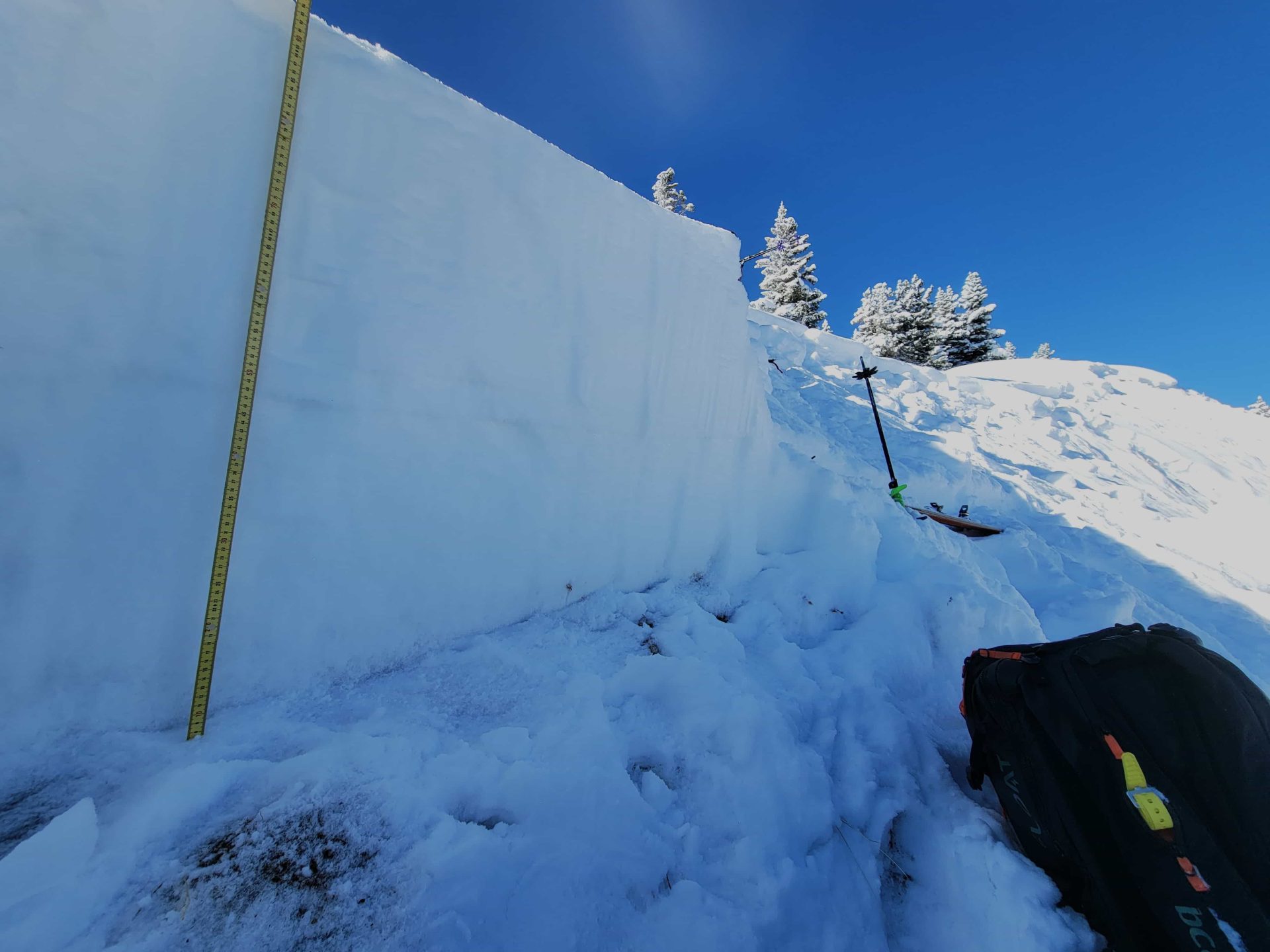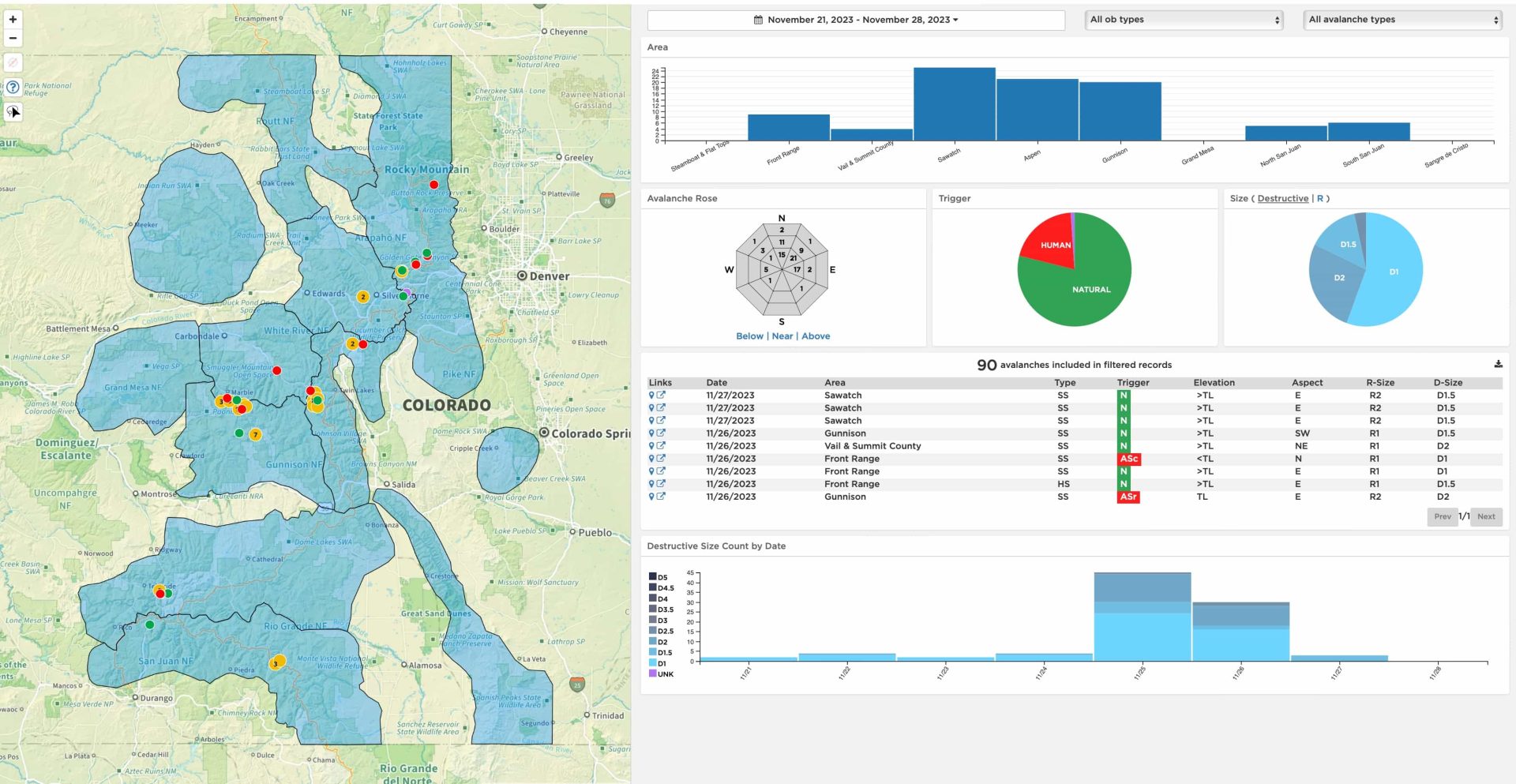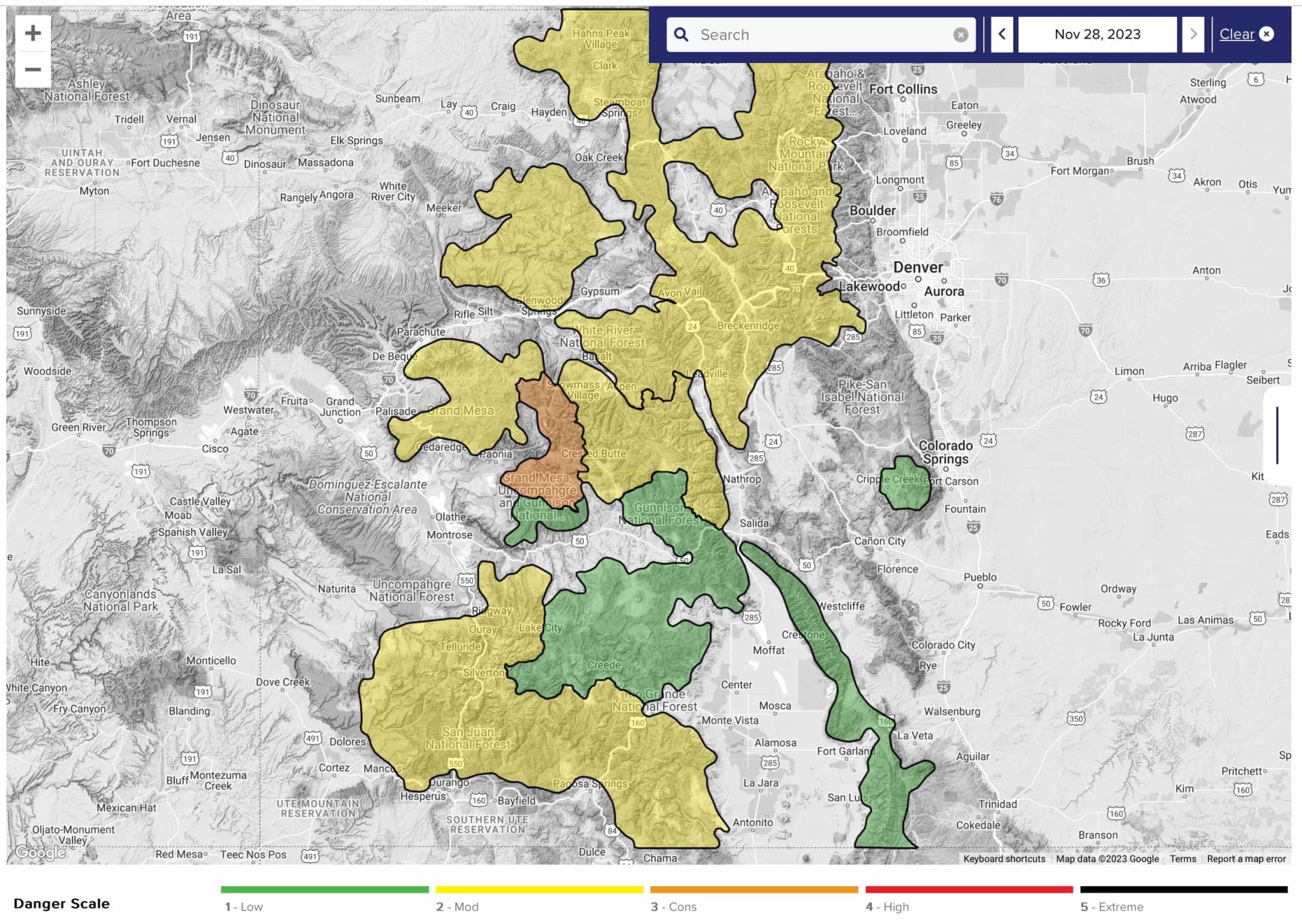
90 avalanches were reported in Colorado from November 21 to 27, 18 of which were human-triggered and involved six people caught and carried and three people partially buried, according to data on the Colorado Avalanche Information Center’s website.
A slide off Raspberry Ridge near Aspen caught four skiers and partially buried three on November 25. The CAIC reports it was lucky nobody was injured or killed.
“A group of nine backcountry travelers (skiers and snowboarders) intended to ski the north-facing slopes off Raspberry Ridge, locally referred to as The Fridge. Three skiers descended the upper slopes and regrouped near the bottom of the path. The fourth skier triggered a large avalanche and was caught, carried, and partially buried but able to self-extricate. The avalanche debris traveled downslope and ran into the three skiers as they were in their stopping zone waiting for the others. One skier was hit from behind and was able to get out of the debris after traveling around 100 feet downslope. The other two skiers were caught and carried several hundred feet and partially buried with their heads above the snow. The two skiers partially buried required assistance to dig themselves out of the debris and both lost gear including skis and poles. The five travelers at the top of the slope descended the bed surface and debris pile to assist then all nine of them descended back to the trailhead. Luckily nobody in the party was seriously injured or killed.”
On November 23, a backcountry rider triggered and was carried 75 feet in a slide on Berthoud Pass. On November 21, a skier on James Peak, near Winter Park, remotely triggered a slide above him and was carried 100 feet before arresting.
“Minor cracking under skis on the south side of James Peak. Active windloading in the morning onto S facing terrain. West facing alpine terrain didn’t have avalanche hazard where I traveled due to most of the snow being stripped away prior to this storm. More of a rock hazard. As I descended a west facing chute, I started seeing activity near and below treeline in protected terrain. As the terrain tilted more NW I unintentionally remotely triggered a small persistent slab avalanche about 50’ above me. I was carried for 100’ before arresting. The slide continued to run another 400’, about 550’ total.”

The Colorado Avalanche Information Center (CAIC) has raised the avalanche risk to ‘moderate’ in most mountain regions, with some areas like Grand Mesa and Aspen at a ‘considerable’ level. Last winter, Colorado saw 11 avalanche fatalities, a number above the long-term average. The USA saw 30 deaths last season, and Canada saw 15.
“The current early season conditions are more dangerous than you might expect for November. You can easily trigger a large and dangerous avalanche, and you can trigger them from below a slope or from a distance. You also might be the third or fourth person to travel on a slope before triggering an avalanche. To reduce your chances of triggering a potentially deadly avalanche, avoid traveling on or underneath steep slopes that face northwest through north to southeast, especially near and above the treeline. Safer travel options exist on south, southwest, and west-facing slopes or by sticking to slopes less than about 30 degrees without any similarly steep slopes overhead.”
There has been one fatality in North America so far this season. An ice climber in Peter Lougheed Provincial Park in Alberta, Canada, was killed on November 11, 2023.
